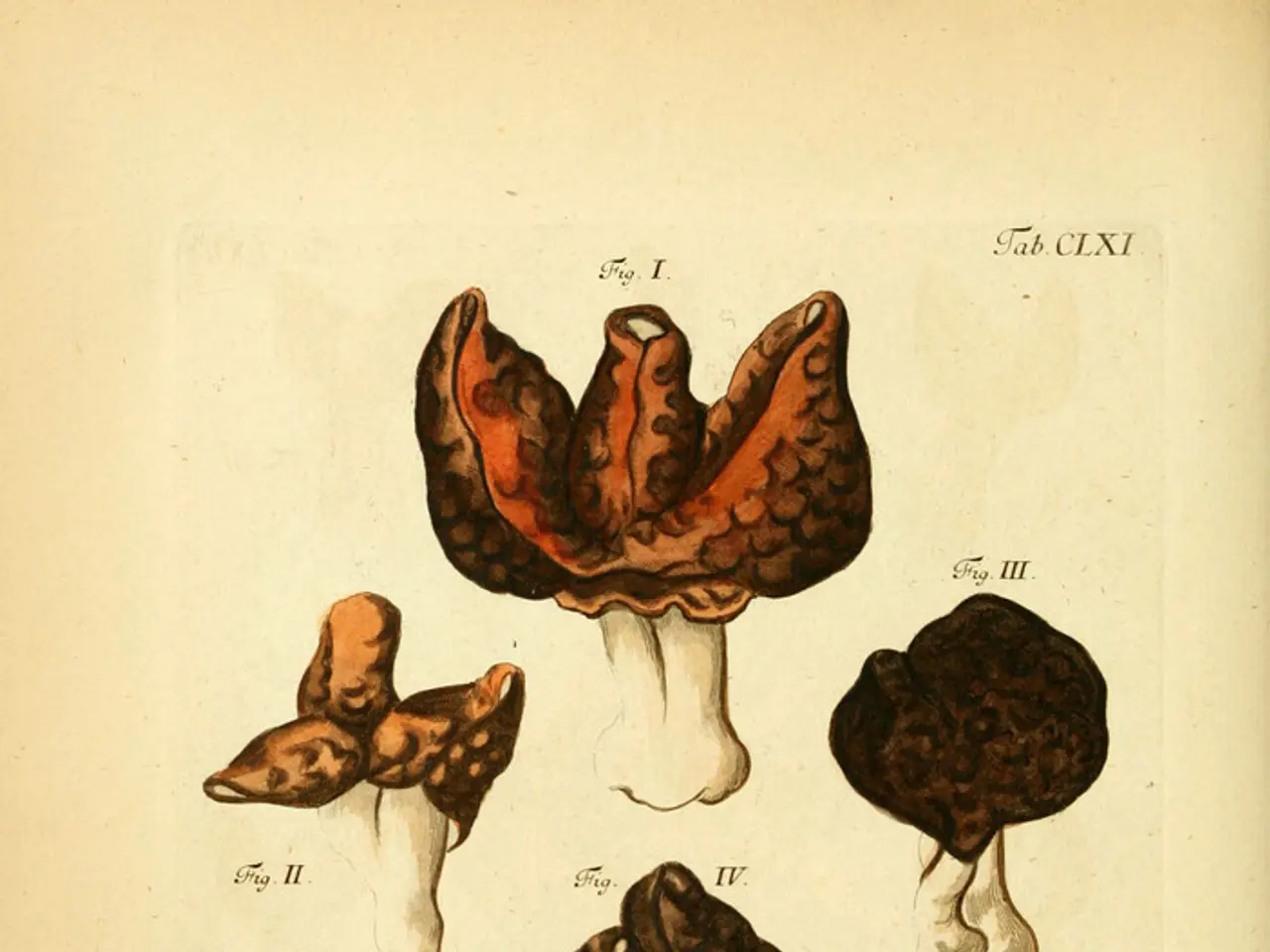Rainy Conditions Warned for Mushroom Collectors: Bounty and Toxins Arise
In the lush forests of Brandenburg, mushroom foraging is a popular pastime. However, it's essential to approach this activity with caution, as some mushroom species can be highly toxic. Here are some key facts to keep in mind for beginners.
Each person is allowed to collect approximately one kilogram of mushrooms per day according to the Brandenburg Forest Act. But it's important to be aware of the dangerous mushroom species to avoid. The most harmful include the Death Cap (Amanita phalloides), Amanita virosa, Amanita chlorinosma, and Amanita muscaria. These species are responsible for the majority of mushroom poisoning deaths worldwide, with Death Cap alone accounting for about 90% of fatal cases globally.
To identify dangerous mushrooms, beginners should look out for species with bright red, white, or yellow colours. Mushrooms with white gills beneath the cap and a thick, wrinkled stem are common in deadly species like Amanitas. Species that stain blue when cut or have red markings should also be avoided.
For safe identification methods, beginners can conduct a spore print test. This involves placing the mushroom cap gills-down on white paper or glass for several hours to observe spore color. A white spore print could indicate an Amanita species, signaling high danger. Additionally, beginners should avoid picking mushrooms with any red markings, or those that stain blue when cut, unless absolutely certain.
Learning from experienced foragers or mycologists is highly recommended, as misidentification can be fatal. For those starting out, it's advisable to collect boletes, as they are safe and have a cap, stem, and tubes or sponge on the underside of the cap.
Additional precautions for beginners include avoiding harvesting mushrooms from unfamiliar environments without expert guidance. Some mushrooms, like edible morels and chicken of the woods, can still cause issues if mishandled or consumed raw.
It's also worth noting that the mycelium, the actual mushroom, is always present unless its living conditions are destroyed. Mushroom expert Wolfgang Bivour reports a bountiful harvest of various mushroom species in Potsdam, including summer porcini, spruce boletes, morels, various species of boletes, giant puffballs, honey mushrooms, and champignons.
However, not all mushrooms are safe to eat. Bivour warns about poisonous mushroom species like the panther mushroom and the green knobbed bolete, the latter of which can be deadly. The green knobbed bolete's poison cannot be broken down by the body, and consuming one mushroom can lead to severe vomiting and diarrhea after 6 to 24 hours.
Lutz Helbig, a mushroom advisor from the district of Oberspreewald-Lausitz, also emphasises the danger of poisonous mushrooms, with cases of collectors eating poisonous mushrooms occurring every year. Helbig advises against using mushroom identification apps, as they may not provide accurate identification. Instead, he suggests leaving any mushroom with the slightest doubt unpicked, or wrapping it with its roots and bulb in newspaper and taking it to a mushroom consultation.
In summary, beginners should avoid bright-colored mushrooms with white gills and thick stems, especially Amanita species, use spore prints as a key scientific test, and gain practical knowledge from experts before foraging independently to minimise risk. The main mushroom collecting time is in the fall, but there are also excellent mushrooms to be found in the winter, in April with morels, and when conditions are right. But remember, a simple photo does not provide sufficient information for mushroom identification, and it's always better to err on the side of caution.
Scientists advise beginners to be cautious of mushrooms with bright red, white, or yellow colors, as these may be harmful, such as Amanitas which have white gills beneath the cap and a thick, wrinkled stem. To avoid misidentification that could potentially be fatal, learning from experienced foragers or mycologists is highly recommended.




